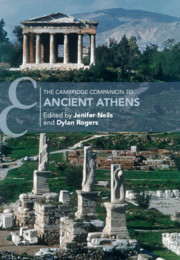Book contents
- The Cambridge Companion to Ancient Athens
- Cambridge Companions to the Ancient World
- The Cambridge Companion to Ancient Athens
- Copyright page
- Contents
- Contributors
- Abbreviations
- Athens: An Introduction
- 1 #Leagros: An Athenian Life
- Part I The Urban Fabric
- Part II Inhabitants
- 11 Population and Social Structure
- 12 The Athenian Family
- 13 Death and Disease
- 14 Animals in Athenian Life
- Part III Business/Commerce
- Part IV Culture and Sport
- Part V Politics
- Reception
- Index
- References
12 - The Athenian Family
from Part II - Inhabitants
Published online by Cambridge University Press: 10 March 2021
- The Cambridge Companion to Ancient Athens
- Cambridge Companions to the Ancient World
- The Cambridge Companion to Ancient Athens
- Copyright page
- Contents
- Contributors
- Abbreviations
- Athens: An Introduction
- 1 #Leagros: An Athenian Life
- Part I The Urban Fabric
- Part II Inhabitants
- 11 Population and Social Structure
- 12 The Athenian Family
- 13 Death and Disease
- 14 Animals in Athenian Life
- Part III Business/Commerce
- Part IV Culture and Sport
- Part V Politics
- Reception
- Index
- References
Summary
The family was the basis of the Athenian polis, both structurally and conceptually. This chapter supports and investigates that claim by engaging with evidence from three different perspectives: law, drama, and funerary monuments.
- Type
- Chapter
- Information
- The Cambridge Companion to Ancient Athens , pp. 173 - 187Publisher: Cambridge University PressPrint publication year: 2021
References
Further Reading
Bibliography
Additional resources to accompany this chapter can be found at: www.cambridge.org/NeilsRogers
- 1
- Cited by



